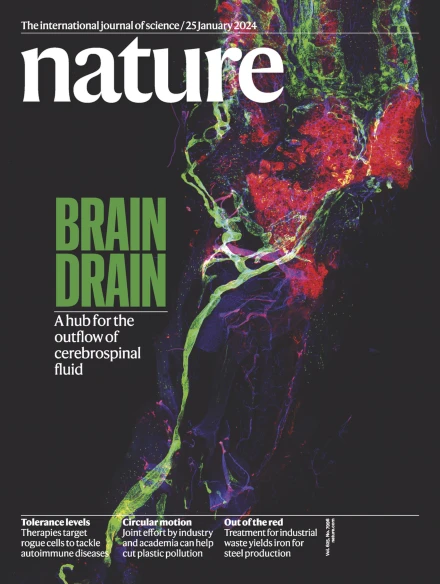Histone H1 deamidation facilitates chromatin relaxation for DNA repair
IF 50.5
1区 综合性期刊
Q1 MULTIDISCIPLINARY SCIENCES
引用次数: 0
Abstract
The formation of accessible chromatin around DNA double-strand breaks is essential for their efficient repair1. Although the linker histone H1 is known to facilitate higher-order chromatin compaction2,3, the mechanisms by which H1 modifications regulate chromatin relaxation in response to DNA damage are unclear. Here we show that CTP synthase 1 (CTPS1)-catalysed deamidation of H1 asparagine residues 76 and 77 triggers the sequential acetylation of lysine 75 following DNA damage, and this dual modification of H1 is associated with chromatin opening. Mechanistically, the histone acetyltransferase p300 showed a preference for deamidated H1 as a substrate, establishing H1 deamidation as a prerequisite for subsequent acetylation. Moreover, high expression of CTPS1 was associated with resistance to cancer radiotherapy, in both mouse xenograft models and clinical cohorts. These findings provide new insights into how linker histones regulate dynamic chromatin alterations in the DNA damage response. Insights into how the linker histone H1 promotes chromatin alterations and allows repair of DNA damage are described.


组蛋白H1脱酰胺促进染色质松弛DNA修复
在DNA双链断裂周围形成可接近的染色质对其有效修复至关重要。虽然已知连接体组蛋白H1促进高阶染色质紧致2,3,但H1修饰在DNA损伤反应中调节染色质松弛的机制尚不清楚。在这里,我们发现CTP合成酶1 (CTPS1)催化H1天冬酰胺残基76和77的脱酰胺引发DNA损伤后赖氨酸75的连续乙酰化,并且这种H1的双重修饰与染色质打开有关。从机制上讲,组蛋白乙酰转移酶p300表现出对脱酰胺H1作为底物的偏好,这表明H1脱酰胺是随后乙酰化的先决条件。此外,在小鼠异种移植模型和临床队列中,CTPS1的高表达与癌症放疗的耐药有关。这些发现为连接蛋白如何调节DNA损伤反应中的动态染色质改变提供了新的见解。
本文章由计算机程序翻译,如有差异,请以英文原文为准。
求助全文
约1分钟内获得全文
求助全文
来源期刊

Nature
综合性期刊-综合性期刊
CiteScore
90.00
自引率
1.20%
发文量
3652
审稿时长
3 months
期刊介绍:
Nature is a prestigious international journal that publishes peer-reviewed research in various scientific and technological fields. The selection of articles is based on criteria such as originality, importance, interdisciplinary relevance, timeliness, accessibility, elegance, and surprising conclusions. In addition to showcasing significant scientific advances, Nature delivers rapid, authoritative, insightful news, and interpretation of current and upcoming trends impacting science, scientists, and the broader public. The journal serves a dual purpose: firstly, to promptly share noteworthy scientific advances and foster discussions among scientists, and secondly, to ensure the swift dissemination of scientific results globally, emphasizing their significance for knowledge, culture, and daily life.
 求助内容:
求助内容: 应助结果提醒方式:
应助结果提醒方式:


